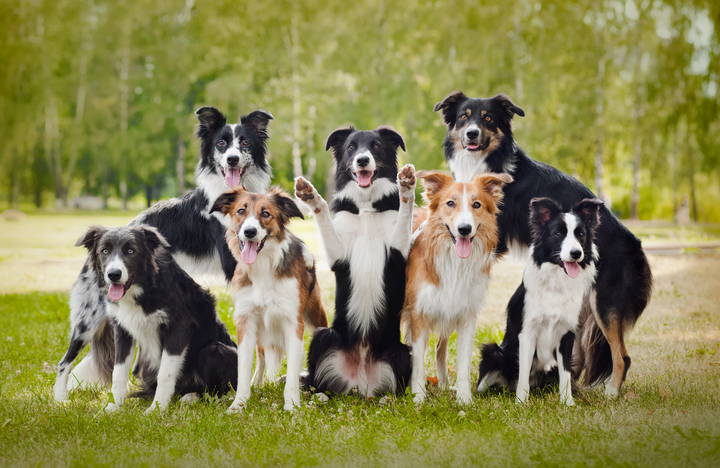Summertime is nearly upon us, but in some parts of the world, any time of year could provide summer-like weather. Many people focus on getting in shape for the summer in order to show off their best beach bodies, but striving to keep fit year-round round is really the best plan for both people and pets.
In some parts of the world, summer-like weather could happen at any time of year. So for those interested in exercising dogs in hot weather, here are our top tips for promoting your pet’s best health this summer!
Is Your Pet Healthy Enough for Summer Exercise?
While all pets can enjoy some form of exercise, it’s important to determine what type of activity will suit them. There isn’t a one-size-fits-all exercise for people, and the same goes for our pets!
Before you start your canine or feline companion on a hot weather exercise program, schedule an examination with your veterinarian to get a sense of the activities that are most appropriate for your pet’s level of physical health.
In addition to thoroughly reviewing your pet’s history and performing a physical exam, your veterinarian may want to perform baseline diagnostics. Your veterinarian may run blood, fecal and urine tests, x-rays, ultrasound, or other tests to assess for abnormalities that could affect your pet's ability to sustain exercise-related stress.
Especially during hot weather, underlying health conditions can compromise your pet’s ability to perform athletically. Examples of these conditions could be:
- Arthritis – Joint inflammation which causes pain and lameness (limping)
- Osteoarthritis – Arthritis that over time progresses to joint surface irregularities, which compromises a normal range of motion and mobility
- Intervertebral disc disease (IVDD) – Abnormalities in the gelatinous discs that support the vertebral column (backbone) can lead to spinal cord and nerve compression. This may cause pain and difficulty moving, behavior changes, reduced appetite, and more.
- Ligament/muscle/tendon injuries – Ligament (especially the cruciate ligaments in the knee), muscle, and tendon trauma can cause pain and lameness.
- Glandular problems – Hypothyroidism, Cushing's disease, diabetes, gallbladder, kidney, liver, and pancreatic disease, and other glandular problems affect whole-body detoxification, blood and lymph flow, and hormonal balance.
- Seizure disorders – Epilepsy, masses inside the skull cavity (cysts and primary or metastatic cancer), brain trauma or infections, and more can lead to seizures which may be more likely to occur during the stress of exercise. These conditions commonly require drugs that cause sedation, impact water consumption, and urination
- Cancer – Lymphoma (white blood cell cancer), Hemangiosarcoma (blood vessel cancer), Osteosarcoma (bone cancer), and others affect whole-body health and generally make a pet feel lethargic, uncomfortable, or cause a lack of appetite
Supporting Exercising Dogs in Hot Weather
- Glucosamine
- Chondroitin
- MSM
- Collagen
- Eggshell membrane
- Vitamins (i.e. A, B3, C, E)
- Minerals (i.e. calcium, iron, manganese, zinc)
- Antioxidants (i.e. astaxanthin, boswellia)
- Anti-inflammatory substances (i.e. turmeric, omega fatty acids)

How to Prioritize Daily Physical Exercise

Weight Management & Healthy Exercise
- Use a metric measuring cup or food scale to determine the appropriate volume per feeding.
- Minimize daily calories that come from snacks. If you must give a treat, choose lower-calorie and whole-food options such as pet-safe fruits and vegetables that are rich in fiber, moisture, vitamins, minerals, and antioxidants.
- Divide snacks into multiple smaller portions before serving.
- If you use treats to train your dog, skip a meal prior to the training session and have treats replace the calories from a meal.
- Make your pet work for any food or treats by making your dog walk across the room, perform some form of a command, or conquer a food-dispensing puzzle/toy.
Pet Health Tip from Vetnique
Apples, bananas, berries, carrots, cucumbers, and melons, are safe low-calorie treat options that are generally appealing to dogs. Avoid calorie-dense, commercially-available pet treats that have little or no nutritional value.
Putting the Vet in Vetnique

Pet Parents are Also Reading
Join the Pack!

Sign up for exclusive deals, curated pet tips from veterinarians, and product launches!
Pet Parents are Also Reading...
May, 2022
Related Articles

Join The Pack
Sign up for exclusive deals, curated pet tips from veterinarians, and product launches!

















